 1 2 Jump to
1 2 Jump to
- Goose
- Cogito ergo sum
 Offline
Offline 
- Registered: 1/29/2015
- Posts: 13,427
Re: Making Your Italian-American Cooking More Italian. A Series
Fresh Vs Dried Pasta
As you are aware, pasta comes in two forms, Fresh and dried.
Fresh must be better, right? I mean it's fresh.
In these days of "fresh is better," wouldn't it seem like fresh pasta would be preferable to dried pasta? After all, fresh pasta is often locally-made and uses, well, fresh ingredients, while dried pasta is shipped over long distances and has been sitting on shelves for an unknown period of time.
But, this is NOT the case. Every day, all over Italy, hard pasta is served to Italians. Hard pasta is not considered to be a convenience food substitute for fresh pasta. The two types of pasta are simply considered to be different products with different uses.
Fresh pasta is made from a simple dough of eggs and flour, usually all-purpose flour or "00" high-gluten flour. The dough is kneaded like bread dough and then pressed through rollers until it's as thin as desired. Then it's cut into long noodles or formed and stuffed into tortellini and ravioli.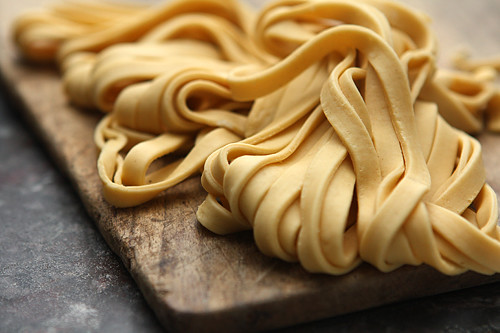
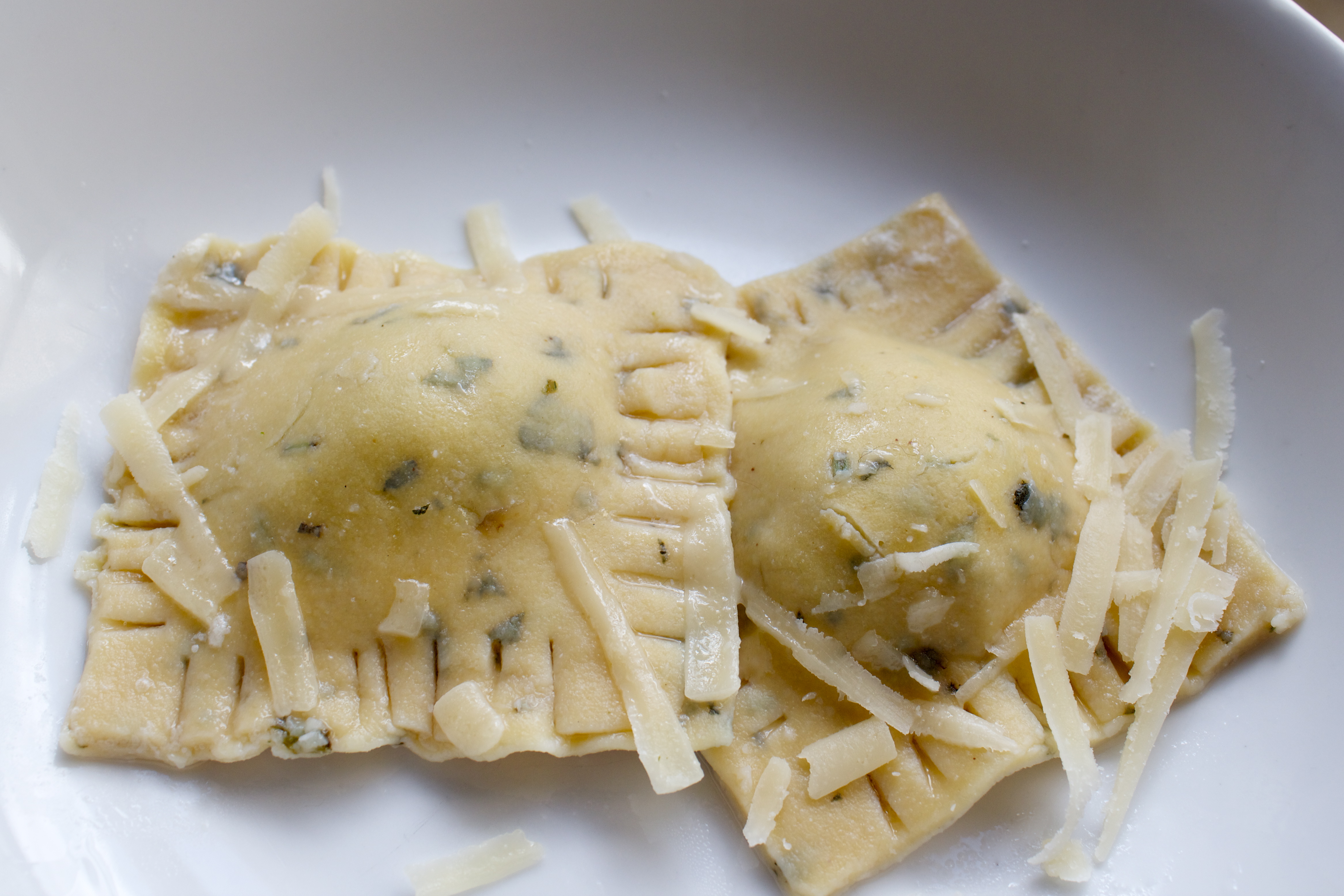
Dry pasta is made from finely ground semolina flour and water (no egg, usually) that is mixed into a paste, pushed through molds, and cut into the multitude of pasta shapes we know and love. (Just like those old Playdough Fun Factories!) Unlike fresh pasta, this pasta is dried at a low temperature for several days until all the moisture has evaporated, allowing it to be stored almost indefinitely.
[img]!!-:strip_icc-!!-/2017/07/28/804/n/1922195/b0468e73bb35736f_6ade614e8a7c6c77_Dry-Spaghetti.jpg[/img]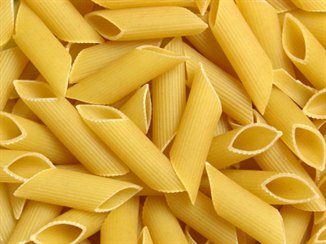
Fresh pasta is much more porous and absorbent than dried. When tossed with an oil based sauce, fresh pasta can soak up the oil and become a greasy rag. It is more suited to sauces based upon tomato, butter, or cream.
Pair your Fresh pasta with delicate sauces where the texture of the pasta can take front stage. Fettuccine Alfredo comes to mind. A simple marina works wonderfully as well.
Dried pasta is much more versatile. Serve it with fish, meat, tomato sauce, or an oil based sauce. Anything goes. Dry pasta is also better suited for hearty dishes like ragu sauces, soups, and casseroles since it's a firm structure will hold up better with other ingredients.
Believe it or not, making your own pasta is really quite easy. It is, after all, just flour and eggs. Fair warning, you will end up with flour all over your kitchen.
Give it a try!
If you make fresh pasta, you can freeze it without any loss in flavor. Just use with 10 days or so. And separate with parchment paper so it doesn't just stick together in a huge ball.
Last edited by Goose (8/21/2018 7:26 am)
We live in a time in which decent and otherwise sensible people are surrendering too easily to the hectoring of morons or extremists.
- Goose
- Cogito ergo sum
 Offline
Offline 
- Registered: 1/29/2015
- Posts: 13,427
Re: Making Your Italian-American Cooking More Italian. A Series
Rice
Pasta gets all the love in most Italian restaurants in the US. Do yourself a favor and explore rice. Rice is very popular in Italy, especially the north. In fact, Italy is the largest rice producer in Europe.
The Romans only knew rice as a very expensive foodstuff from India. It was not widely used. The ancient Romans instead used farro as their grain of choice.
Brought by the Moors after they settled in Europe, rice was first introduced in Italy, precisely in Sicily, as early as the 13th century. From there, it spread to the Naples area and later, due to the connections between the Aragona of Naples and the Sforza of Milan, to the Po Valley in northern Italy, where it found the ideal conditions to be grown: flat lands, abundance of water, and humidity. Still today, the Po Valley is one of the largest rice producers in Europe and rice is eaten extensively throughout northern Italy.
Until the mid-19th century only that one variety of rice called "Nostrale" was grown. In 1839 a Jesuit priest, Padre Calleri, returning from the Phillipines imported 43 different rice varieties, and it was from this stock that Italians began to experiment with the varieties that could best be adapted for use in Northern Italy's temperate climate. Short grain rices such as aborio and Carnaroli grow best in the italian climate.
These short grain cultivars such absorb liquid when cooked, and yet have both a firm bite and creaminess that makes the unique Italian dish Risotto so special.
Risotto
The most famous rice dish in Italy is risotto. Risotto is a northern Italian rice dish cooked in a broth to a creamy consistency. The broth can be derived from meat, fish, or vegetables. Many types of risotto contain butter, wine, onion, and parmesan cheese. It is one of the most common ways of cooking rice in Italy. Saffron was originally used for flavour and its attractive yellow colour.
Risotto Milanese
Risi e Bisi (Risotto with peas, from Venice)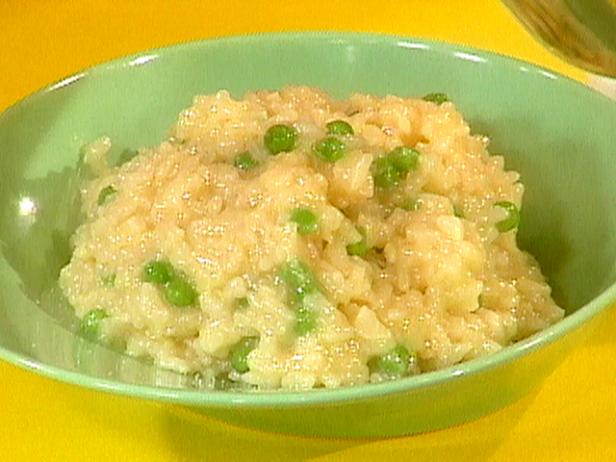
Mushroom Risotto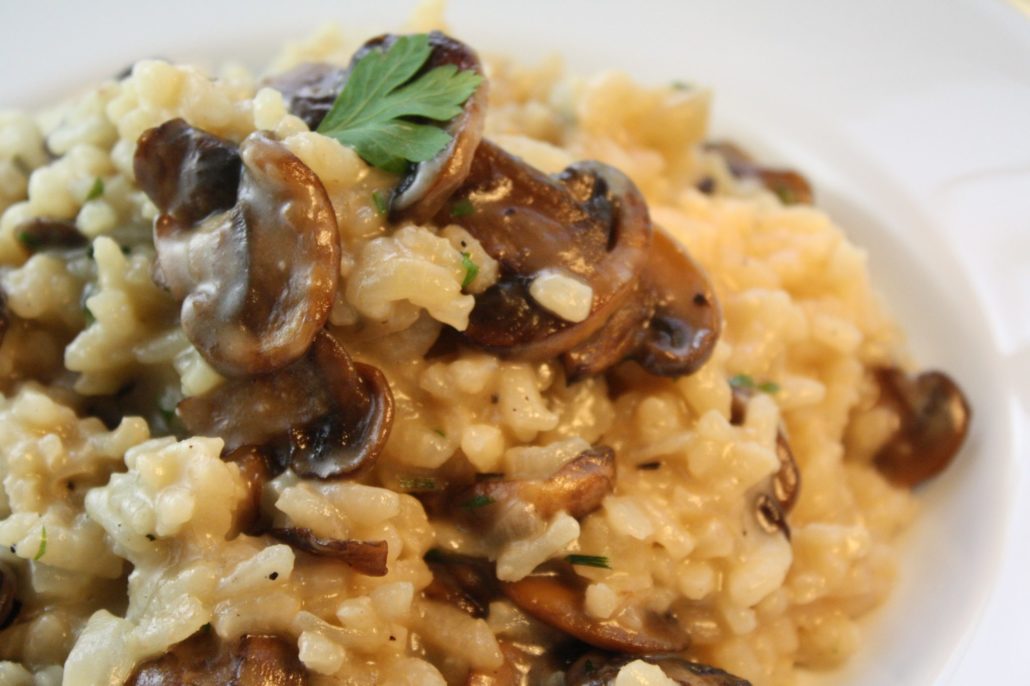
Risotto with Asparagus
Most risottos are made using the same technique.
Onions are browned in olive oil. Then the rice is added to the hot oil and fried for a moment until translucent. Then hot stock is added, one ladleful at a time. The mixture is stirred until the stock is absorbed. Then another ladle is added, and so on.
The dish is then finished with some butter and parmesan cheese, stirred in at the end.
One final thing; authentic Risotto gets it's 'creamy' quality from the starch relased from the rice during the long cooking process, and the cheese/butter added at the finish.
Some cooks actually add heavy cream at the end. Don't do it. That's cheating.
Last edited by Goose (8/25/2018 8:24 am)
We live in a time in which decent and otherwise sensible people are surrendering too easily to the hectoring of morons or extremists.
- •
- Goose
- Cogito ergo sum
 Offline
Offline 
- Registered: 1/29/2015
- Posts: 13,427
Re: Making Your Italian-American Cooking More Italian. A Series
SQUASH AND RICOTTA TART
I like to use butternut squash for this recipe, but any nice meaty squash in season will do, as will a sweet potato. This is a great holiday treat, as an appetizer or as a side dish. It is like baking a cheesecake or pie: once you have done the assembling, it is basically done; just bake it and serve it warm.
Ingredients
1 POUND BUTTERNUT SQUASH GRATED ON THE COARSE HOLES OF A BOX GRATER
1 CUP MILK
2 TABLESPOONS SUGAR
3 TABLESPOONS UNSALTED BUTTER, AT ROOM TEMPERATURE
¼ CUP DRIED BREADCRUMBS
2 LARGE EGGS
1½ POUNDS FRESH RICOTTA, DRAINED
1 CUP GRATED GRANA PADANO
2 TABLESPOONS CHOPPED FRESH MINT
1 TEASPOON KOSHER SALT
¼ TEASPOON FRESHLY GRATED NUTMEG
Directions
Preheat the oven to 350 degrees F. Put the squash in a
medium saucepan with the milk and sugar. Simmer until the squash is tender, about 15 minutes. Let it cool, then wrap the squash in a kitchen towel, and wring out any excess water. Grease a 9-inch glass pie plate with 1 tablespoon of the butter. Sprinkle with 2 tablespoons of the breadcrumbs, and tap around to line the pie plate with the crumbs, tapping out any excess.
In a large bowl, whisk together the eggs and ricotta. Stir in the grated cheese, mint, salt, and nutmeg. Add the squash, breaking up any lumps with your fingers, and stir to incorporate into the ricotta mixture.
Spread the mixture into the pie plate, and smooth the top with a spatula. Cut the remaining butter into small pieces, and scatter on top. Sprinkle with the remaining breadcrumbs, and bake until set, about 40 to 45 minutes. Allow the tart to cool and set on a rack for at least ½ hour before cutting into wedges to serve. Serve warm or at room temperature.
Last edited by Goose (12/04/2018 8:32 am)
We live in a time in which decent and otherwise sensible people are surrendering too easily to the hectoring of morons or extremists.
- •
- Goose
- Cogito ergo sum
 Offline
Offline 
- Registered: 1/29/2015
- Posts: 13,427
Re: Making Your Italian-American Cooking More Italian. A Series
Throughout Tuscany and northern Italy the wild boar is a once a pest, and a culinary legend. Men still hunt them every fall, and their stews appear on restaurants all over the countryside.
You can even find it in fine restaurants in Rome.
WILD BOAR RAGU WITH CHEESEY POLENTA
Ragu has a unique history, being that it is a classic Italian dish, but doesn’t seem to have made an appearance in Italy until Napoleon invaded Italy in the 18th century. The hypothesis is that ragu is an Italian-ized version of the French Ragout, which is a braised meat stew.
The Italian Ragu varies regionally, and employs a variety of ingredients, including vegetables, tomatoes, wine, anchovy, and sometimes even milk. (Note- I’ve included milk in past ragu attempts, but couldn’t figure out the importance of this ingredient, so decided to omit it here).
What makes ragu ragu is the principal ingredient being meat, and the tomato (or other) ingredients taking a backseat to the braised whole or ground protein. There are other Italian sauces that include tomatoes seasoned with small amounts of meat, which are quite delicious as well, but they are are not a true ragu.
(Swapping boar stew meat for pork shoulder should work just fine, if you don’t have access to wild boar)
Ingredients
1 lb wild boar stew meat, cut into 2 inch pieces
1 medium spanish onion, diced
2 carrots, peeled and diced
2 celery stalks, diced
5 cloves of garlic, minced
1 tablespoon anchovy paste (alternatively- 4-5 whole anchovy fillets, minced and mashed with side of chef's knife)
4 thyme sprigs
2 dried bay leaves
28 oz can diced tomatoes, with juices
1 cup beef stock
1 cup dry red wine (I used Toscana)
½ teaspoon nutmeg
2 tablespoons tomato paste
Salt and pepper, to taste
For the Cheesey Polenta
1 cup polenta (also called corn grits, or yellow cornmeal)
5 cups water
1 ½ cups freshly grated pecorino romano cheese
2 teaspoons minced fresh thyme (optional)
Salt and pepper, to taste
Instructions
Preheat oven to 350 degrees.
In a cast iron, or non-reactive oven-safe stock pot, heat olive oil over high heat.
Add boar pieces, and sear on all sides, until browned. Remove from pot and set aside.
Reduce heat to medium and add a little extra oil to pot as needed. Add onion, carrot, and celery. Season with salt and pepper. Saute until vegetables begin to soften and onion is translucent.
Add garlic, anchovy, thyme, and bay leaves. Saute for 1-2 minutes more.
Next add tomatoes, beef stock, red wine, and nutmeg. Stir well, scraping up any browned bits from bottom of the pan.
Bring mixture to a simmer.
Cover, and bake in oven for 4 hours, or until meat is very tender and easily falls apart. Check periodically to monitor liquid level; if ragu is getting too dry, add extra wine, water, or beef stock.
After ragu is out of the oven, remove thyme stems (leaves should have all fallen off), and bay leaves. Using spoon or fork mash and shred the meat until no large pieces remain.
Stir in tomato paste. Add water if mixture appears too thick.
Taste and season with additional salt and pepper as needed.
To make the Cheesey Polenta
In a medium saucepan bring polenta and water to a boil. When mixture begins to spit, turn down to medium low heat and continue to cook, stirring often, until mixture thickens. This will take about 45-50 minutes.
Stir in cheese and thyme (if using). Season with salt and pepper, to taste.
Serve ragu over polenta.
We live in a time in which decent and otherwise sensible people are surrendering too easily to the hectoring of morons or extremists.
- •
- Goose
- Cogito ergo sum
 Offline
Offline 
- Registered: 1/29/2015
- Posts: 13,427
Re: Making Your Italian-American Cooking More Italian. A Series
Get Yourself Some Cookbooks
A few of my favorites
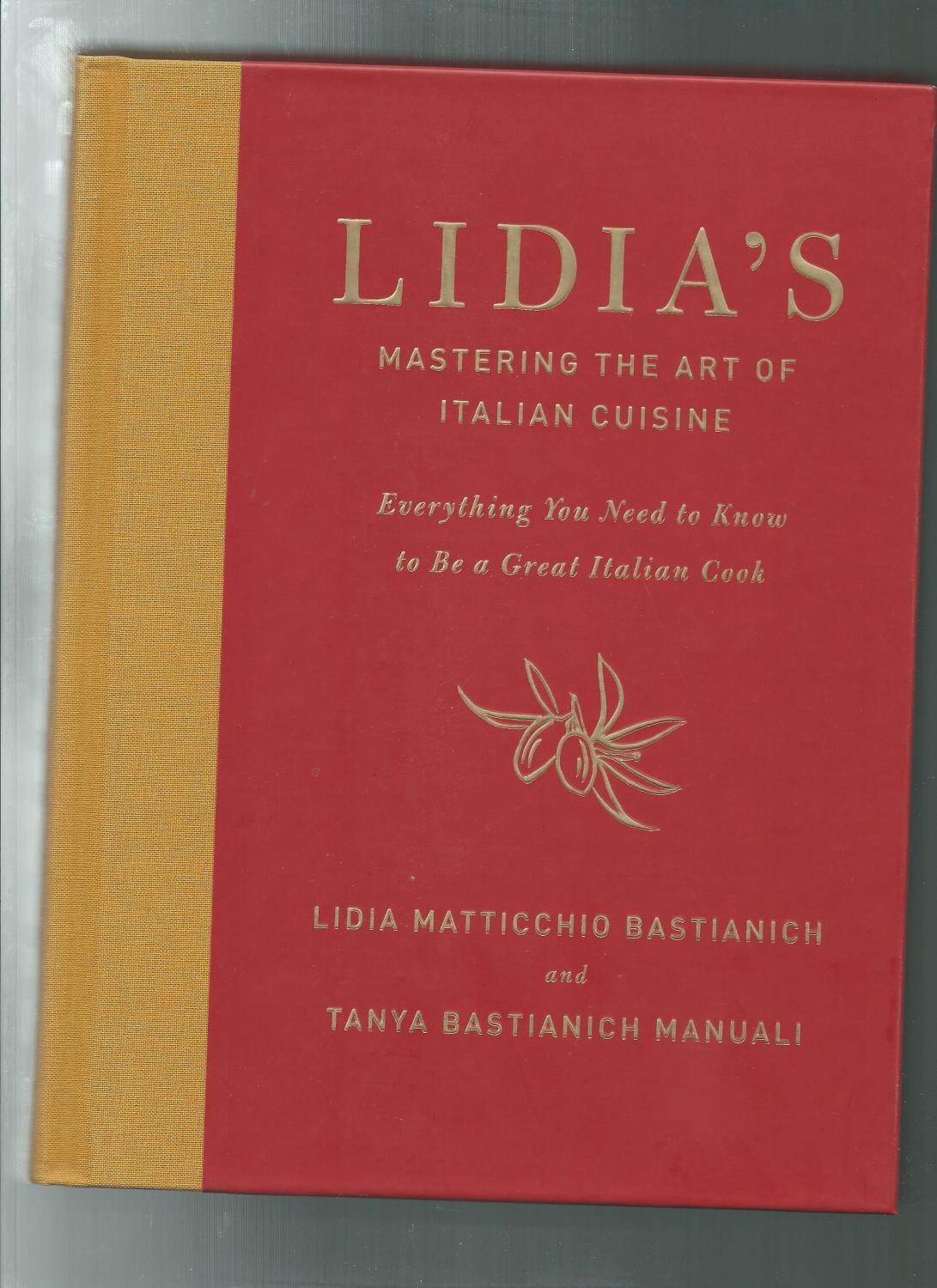
[img],204,203,200_.jpg[/img]
Last edited by Goose (12/08/2018 8:05 am)
We live in a time in which decent and otherwise sensible people are surrendering too easily to the hectoring of morons or extremists.
- •
- Goose
- Cogito ergo sum
 Offline
Offline 
- Registered: 1/29/2015
- Posts: 13,427
Re: Making Your Italian-American Cooking More Italian. A Series
Don't Throw Out Your Stale Bread.
At the height of tomato season, for every perfectly ripe, taut and juicy specimen, there’s an overripe, oozing counterpart not far away. The Tuscan bread salad called panzanella is the perfect place to use those sad, soft tomatoes that are still rich in flavor.
Traditional panzanella is made with stale, dried bread that’s rehydrated from a dressing of sweet tomato juices, vinegar and plenty of olive oil. This version also includes some mozzarella for richness and cucumber for crunch. It’s an ideal make-ahead dish; the longer the mixture sits (up to 6 or so hours), the better it tastes. Just make sure your bread thoroughly dries out in the oven so it won’t turn to mush.
Panzanella With Mozzarella and Herbs
INGREDIENTS
4 ounces ciabatta or baguette, preferably stale, cut into 1-inch cubes (about 3 cups)
6 tablespoons extra-virgin olive oil, more to taste
¾ teaspoon kosher sea salt, more to taste
2 pounds very ripe tomatoes, preferably a mix of varieties and colors
6 ounces fresh mozzarella, torn or cut into bite-size pieces
½ cup thinly sliced red onion, about half a small onion
2 garlic cloves, grated to a paste
2 tablespoons red wine vinegar, more to taste
1 tablespoon chopped fresh oregano or thyme (or a combination)
Large pinch red pepper flakes (optional)
½ teaspoon Dijon mustard
Black pepper, to taste
½ cup thinly sliced Persian or Kirby cucumber, about 1 small cucumber
½ cup torn basil leaves
¼ cup flat-leaf parsley leaves, roughly chopped
1 tablespoon capers, drained
PREPARATION
Heat oven to 425 degrees. Spread the bread cubes on a rimmed baking sheet and toss with 2 tablespoons oil and a pinch of salt. Bake until they are dried out and pale golden brown at the edges, about 7 to 15 minutes. Let cool on a wire rack.
Cut tomatoes into bite-size pieces and transfer to a large bowl. Add mozzarella, onions, garlic paste, 1 tablespoon vinegar, oregano or thyme, 1/4 teaspoon salt and the red pepper flakes if using. Toss to coat and set aside.
In a medium bowl, combine remaining 1 tablespoon vinegar, the mustard, 1/4 teaspoon salt and some black pepper to taste. While whisking constantly, slowly drizzle in the remaining 4 tablespoons olive oil until the mixture is thickened. Stir in cucumbers, basil and parsley.
Add bread cubes, cucumber mixture and capers to the tomatoes and toss well. Let sit for at least 30 minutes and up to 4 hours before serving. Toss with a little more olive oil, vinegar and salt if needed just before serving.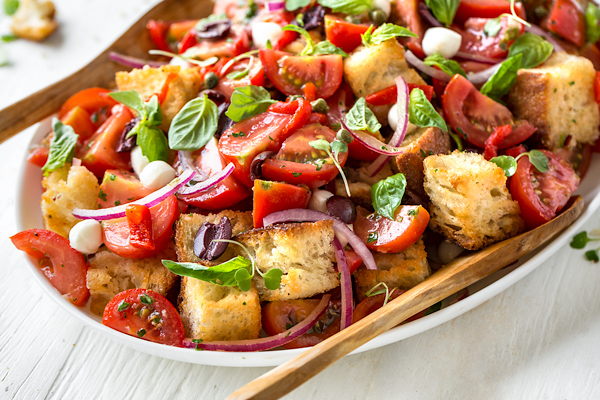
Last edited by Goose (2/02/2019 8:23 am)
We live in a time in which decent and otherwise sensible people are surrendering too easily to the hectoring of morons or extremists.
- •
- Goose
- Cogito ergo sum
 Offline
Offline 
- Registered: 1/29/2015
- Posts: 13,427
Re: Making Your Italian-American Cooking More Italian. A Series
Amalfi Clams
Serve these clams as a first course with good crusty bread to sop up the juices.
Or, pour over your favorite pasta.
2 dozen Fresh Littleneck Clams or Manila Clams
4 Tbsp. Butter
2 Tbsp. Olive Oil
1 Shallot
1 Cup Finely chopped Sweet Peppers – I like the mini peppers
1 Fennel Bulb – chopped
Dash Red Pepper flakes
2 Cloves Fresh Garlic chopped finely
1 Cup Prosecco or white wine
3 Tbsp. Chopped Fresh Parsley
Fresh Lemon juice
Melt butter in the olive oil over medium-high heat and add the peppers, shallots,
fennel and red pepper flakes. Cook on Medium High about 5 minutes.
Add garlic and cook another minute
Now, add your clams.
Pour in the prosecco or white wine.
Add the parsley and quickly cover the pan.
Simmer about 8-10 minutes. If your clams are large you may need a few more
minutes. Make sure ALL the clams open, and discard any that do not.
Sprinkle on lemon juice.
Put the clams and broth in a bowl and serve at the table in individual plates and crusty
bread for dipping.
Last edited by Goose (5/21/2019 5:53 am)
We live in a time in which decent and otherwise sensible people are surrendering too easily to the hectoring of morons or extremists.
- •
 1 2 Jump to
1 2 Jump to